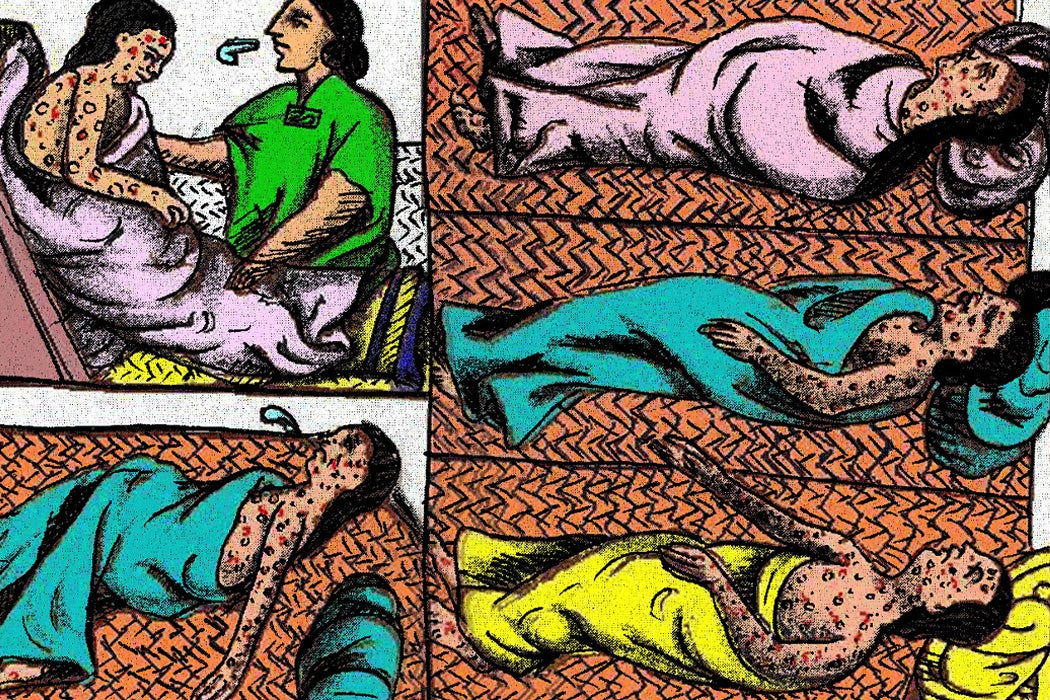In the history of infectious disease in the Americas, by far the worst epidemics resulted from European contact with Native people. That story often gets told as an inevitable one—millions of immunologically naïve people were doomed to get very sick. But historian David S. Jones argues that this misses enormous complexity in patterns of infection among Native people.
Jones explains that if we say a group of Native people had little immunity to a disease, that could mean several different things. It could imply a difference in the genetics of populations that had never known smallpox or tuberculosis. It could refer to antibodies that weren’t developed in childhood. Or it could involve immune responses compromised by malnutrition and other stressors.
According to Jones, there’s reason to believe the genetic explanation doesn’t go very far. Because diseases like smallpox and measles seem to have only reached Europe in the second or third century CE, natural selection probably hadn’t had time to give Europeans an inherited advantage over Native Americans in fighting those diseases. Research has also found that some tribes of the Amazon responded to the first instances of measles to hit them, and to inoculations for a range of other diseases, in a similar way to other populations.
A lack of immunity acquired through childhood exposure might explain more of the Native vulnerability to infection. But, Jones writes, analysis of skeletal remains has found that tuberculosis and pneumonia—and possibly herpes and chicken pox as well—existed in the Americas before Europeans arrived.
Jones argues that the causes of vulnerability to disease are complicated and ultimately impossible to disentangle. But social and environmental conditions clearly played a huge role, most obviously through malnutrition.
In many cases, the arrival of Europeans brought chaos to Native societies, causing them to miss a corn planting or fall hunt, which could leave them vulnerable to disease. In Mexico, Spanish settlers brought a “plague of sheep” that wrecked Natives’ crops.
Meanwhile, European settlers weren’t predetermined to be resilient against plagues. At Jamestown, 80 percent of colonists died between 1607 and 1625 as malnutrition and other difficulties left them vulnerable to illness. During the U.S. Civil War, smallpox mortality reached almost 40 percent among Union soldiers living in radically inadequate conditions.
Weekly Newsletter
Jones suggests the clearest evidence of the importance of social conditions might come from comparisons between similar Native groups. The Lamania Mayas, who were heavily colonized by Spain, were more likely to die of disease than the Tipu Mayas, who retained more autonomy. The Navajo were more resilient to disease than the Hopi because their pastoral way of life allowed them to better adapt to settler incursion. Hawaiians were more likely to succumb to disease than Samoans because of different patterns in settlers’ seizure of land.
A similar story is playing out in today’s pandemic. Groups with less access to healthy food, running water, and heath care—as well as those most likely to work in essential jobs—suffer the most. That includes black Americans, poor people of all races, and, still today, Native nations.







